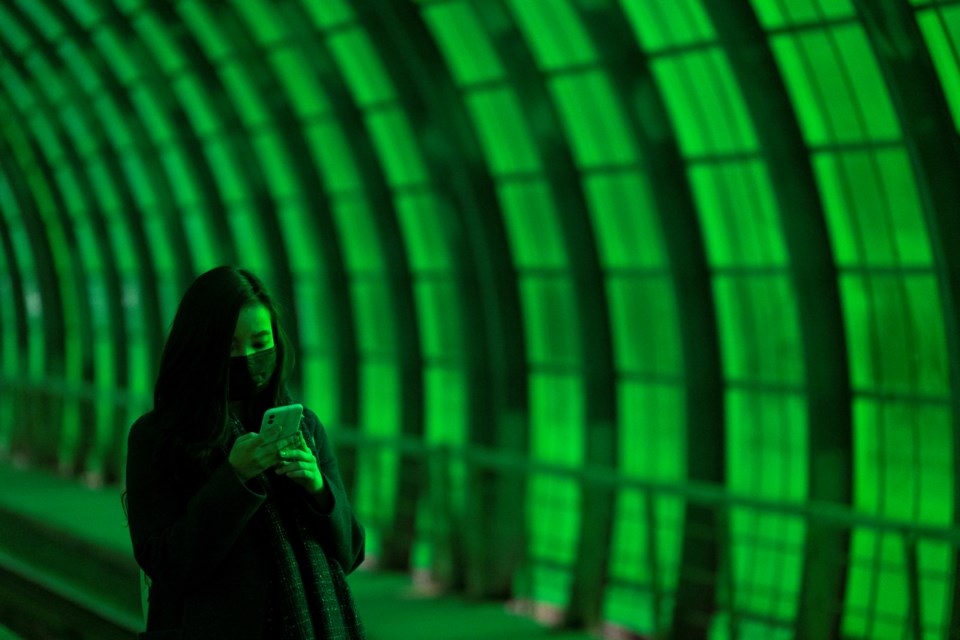Protective measures against COVID-19 have been preached daily since the onset of the pandemic — wash your hands, keep your distance, stop touching your face.
Should disinfect your cellphone be added to that list?
"Cellphones are like an organ of your body, an extension of your body," microbiology specialist Jason Tetro said from Edmonton in a phone interview with The Canadian Press. "So you have to think of it in the same way that you would think of your hands or feet or something along those lines.
"You want to keep it as clean as you would normally your hands."
Tetro, the author of "The Germ Files," says a cellphone — like any other surface — can be contaminated by the coronavirus if it comes into contact with droplets from an infected person.
Those droplets, he said, can remain infectious for "several hours," though the degree of their ineffectiveness depends on how long they've been there.
"In the first couple of hours while the droplets dry, you have a significant risk of picking up (the virus) with your finger and then putting it into your nose or your mouth," Tetro said, adding that the average person touches their face 16 times per hour.
"Unless you're touching a cellphone and then using hand sanitizer and then touching your face, the risk is really high that a contaminated phone could lead to you having exposure."
While the chance of exposure continues even after the droplets have dried, Tetro said you'd have to be pressing the cellphone much harder to pick up the virus with your finger.
But applying a contaminated phone to your face is another story.
"Usually there's been such an exponential decay after six hours that you would need direct contact between the surface and your face to pick up the virus," Tetro said. "Now in the case of most surfaces, that's probably something people would laugh at, but it's (different) when we're talking about a phone, right?"
The material a cellphone is made of doesn't seem to matter, Tetro said. Viruses on steel, glass and plastic have "relatively similar survival times."
Tetro, who also goes by "the Germ Guy," cleans his own phone multiple times a day — one thorough cleaning followed by periodic wipes.
He suggests using a damp cloth with soap to disinfect, being careful not to use too much liquid on an electronic. Eye glass cleaning solutions, which typically contain some form of detergent, also work.
The Centers for Disease Control and Prevention (CDC) website says to clean cellphones, tablets and other touch-screen devices with "alcohol-based wipes or sprays containing at least 70 per cent alcohol."
Dr. Isaac Bogoch, an infectious disease specialist based out of Toronto General Hospital, said people should use common sense when deciding whether or not, and how often, they need to disinfect things like cellphones and smart watches.
"There's no blanket statement, right? It all depends on who you're in touch with, what you're in touch with, what you're doing day to day," Bogoch said. "Have you been in touch with high-contact surfaces and now touching your phone and putting your phone to your face? OK maybe clean the phone.
"There's no guidance for this. It's hopefully just a bit of common sense."
Thinking about cellphones as potential disease-spreaders isn't new.
A research study from 2017 found a "high median bacterial count" on teenagers' phones, and a 2015 study discovered that the Ebola virus could survive on a cellphone for up to seven days.
"COVID-19 has brought this to everyone's attention but there's influenza and lots of other respiratory viruses that can be present," said Kevin Coombs, an infectious disease expert and professor of microbiology at the University of Manitoba.
"But if people are carrying out the self isolation, staying distances away from each other, that minimizes the chances of your cellphone getting contaminated."
Tetro said he hopes the COVID-19 outbreak might change the way we look at cellphones. But he has his doubts, saying other viruses like H1N1, SARS, MERS, Zika, and West Nile did little to convince people to clean their phones more regularly.
"I'd like to think of this as a wake-up call," Tetro said. "But we've had seven so-called wake-up calls since we started using cellphones in the late 1990's."
This report by The Canadian Press was first published April 2, 2020.
Melissa Couto, The Canadian Press



